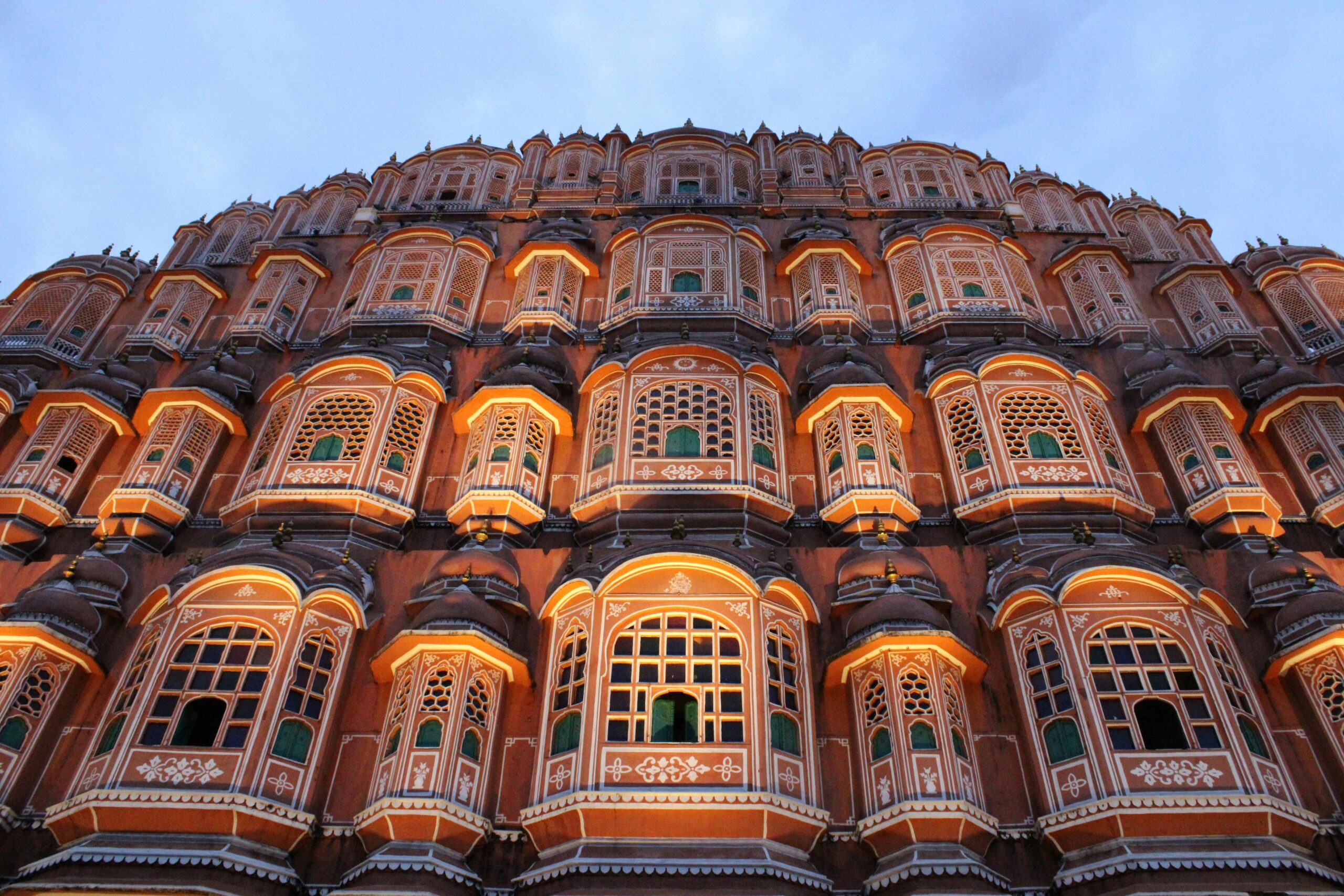Hawa Mahal: Nestled in the heart of the Pink City, Jaipur, the Hawa Mahal stands as an architectural marvel, a symbol of Rajasthan’s rich history and vibrant culture. Translating to “Palace of Winds,” this stunning structure has captured the imaginations of visitors for centuries. Join us on a journey as we unravel the beauty, history, and significance of the Hawa Mahal.
“Behold the enchanting facade of Hawa Mahal, the ‘Palace of Winds,’ in the heart of Jaipur, Rajasthan. Marvel at the unique honeycomb design of this architectural masterpiece, adorned with intricately carved windows and balconies. Witness the play of light and shadow as you step into the inner chambers, experiencing the historical grandeur and royal elegance that this iconic palace embodies. Plan your visit to Hawa Mahal for a captivating journey into the rich cultural heritage of Jaipur.”
A Historical Tapestry: Hawa Mahal
Built in 1799 by Maharaja Sawai Pratap Singh, the Hawa Mahal was designed by Lal Chand Usta in the form of the crown of Lord Krishna. This five-story palace, constructed of red and pink sandstone, boasts a unique pyramid shape with 953 intricately designed windows known as “jharokhas.” These windows not only serve an aesthetic purpose but also allow a cool breeze to flow through the palace, earning it the nickname “Palace of Winds.”
Architectural Marvel: Hawa Mahal
The architecture of Hawa Mahal reflects the fusion of Rajputana and Mughal styles. The honeycomb structure, resembling a beehive, showcases the intricate lattice work and delicate floral patterns that are synonymous with Rajasthani craftsmanship. The red and pink sandstone used in its construction gives the palace a warm and inviting glow, especially during sunrise and sunset, when the sunlight reflects off its facades.
Jharokhas: Windows to the Past: Hawa Mahal
The highlight of Hawa Mahal is undeniably its 953 jharokhas. Each window is a masterpiece, adorned with detailed carvings and delicate screens that allowed the royal women to observe the events on the streets below without being seen. These jharokhas also served a practical purpose, facilitating the circulation of air and keeping the palace cool, a vital consideration in Rajasthan’s scorching temperatures.
Historical Significance:
Hawa Mahal served as an extension of the City Palace, providing the royal women with a discreet vantage point to witness processions and festivals. The palace, with its strategic location, also allowed the women to observe everyday life in the bustling streets of Jaipur without compromising their privacy.
Preserving Heritage:
Recognizing the cultural and historical significance of Hawa Mahal, efforts have been made to preserve and showcase this architectural gem. The palace is now a museum that houses artifacts and exhibits that offer insights into the royal lifestyle of the bygone era. Visitors can explore the various chambers, take in panoramic views of the city from the top floors, and delve into the rich history that the Hawa Mahal encapsulates.

Conclusion:
Hawa Mahal stands as a testament to the grandeur and ingenuity of Rajasthani architecture. Its delicate charm, rich history, and breathtaking views make it a must-visit destination for anyone exploring the cultural tapestry of Jaipur. As the sun sets and the Palace of Winds bathes in the warm hues of the evening sky, one can’t help but be transported back in time, imagining the whispers of history that echo through its intricately designed corridors.

